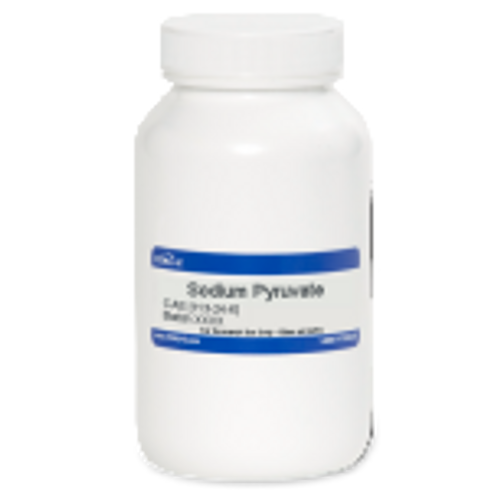Sodium Pyruvate is used by cells as a carbohydrate source. It is also involved the metabolism of amino acids, and initiates the Kreb's cycle. Pyruvate is the end product of glycolysis and is used in further metabolic cycles to supply cells with energy. It plays a role as a free radical scavenger and is a reactive oxygen species (ROS)-quencher. It can be used in cell culture applications and toxicity testing studies.
Sodium Pyruvate is freely soluble in aqueous solution.
| Mechanism of Action | Pyruvate enters the Kreb's or Citric Acid Cycle in the presence of oxygen to supply cells with energy in the form of ATP (adenosine triphosphate). It acts as an intermediate in many metabolic pathways such as sugar metabolism. |
| Eukaryotic Cell Culture Applications |
Sodium Pyruvate is a common energy supplement in cell culture. It has antioxidant properties and protects against oxygen radicals. It was found to eliminate hydrogen peroxide and its toxic effects in human cell culture. In a study with bovine oocytes, Sodium Pyruvate can promote nuclear maturation, specifically cumulus-denuded oocytes (SDOs). When used in nonserum maturation medium, the compound supports (promotes) nuclear maturation and a continuous presence of cumulus cells during maturation is important for development of zygotes to the blastocyst stage. |
| Impurity Profile | Free Pyruvic Acid: ≤0.25% Arsenic: ≤1ppm Heavy Metals: ≤10ppm Chloride: ≤20ppm Sulfate: ≤20ppm Pyruvic Radical: ≥76.0% |
| References |
Giandomenico AR, Cerniglia GE, Biaglow JE, Stevens CW, Koch CJ (1997) The importance of Sodium Pyruvate in assessing damage produced by hydrogen peroxide free radical biology and medicine. 23(3):426-434 Kelts JL, Cali JJ, Duellman SJ and Shultz J (2015) Altered cytotoxicity of ROS-inducing compounds by Sodium Pyruvate in cell culture medium depends on the location of ROS generation. SpringerPlus 4:269 |








